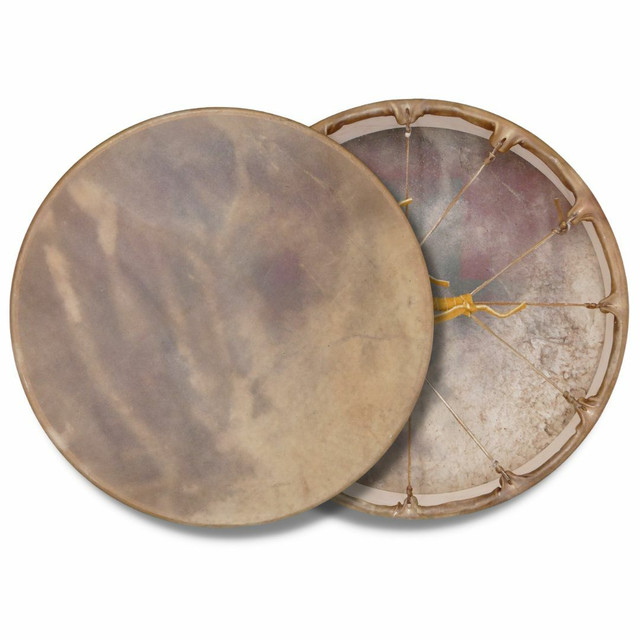Using Sound With A Yoga Practice
Why you should use sound with yoga.
A central difficulty in yoga is the effect of the wandering mind, and physical discomfort. Yoga does naturally relax the mind. The movements of yoga help our mind come into the present moment. As muscles are stretched, and worked, and the breath is activated, heat is generated and tension is released, leading to a body that feels more relaxed and generally happier. At the same time though, a key difficulty of yoga is how the mind may wander and tense with pain or stress. Thoughts about external realities can be difficult to let go of if they are empowered by our intentions and emotions, taking attention away from the yoga postures.
Sound benefits yoga by vibrationally bypassing the thinking the mind, effecting us at an emotional and attentional level. Sound Healing is the intentional use of sound to create a vibrational environment which becomes a catalyst for healing in the physical, mental, emotional, or spiritual aspects of our being. When attention is given to the sound, it is simple to allow one’s attention to be enveloped by the vibration and the felt sense of the vibration, opening up space to be more clearly focused. In creating an intentional environment of vibration, sound helps focus more fully on the mind and body, and to be an observer of reality. With sound as the background of the experience, yoga practitioners then experience a greater ease in the process, with a greater sense of focus, relaxation, release and physical wellbeing. Thus, whether it be playing crystal singing bowls, metal singing bowls, a harmonium or drumming, sound and yoga are natural pairings.
The Do’s and Don’ts of using sound with yoga
1) Do use background music.
Simple spiritual or meditative background music helps with uplifting one's mood and focusing the mind. This is already a well-used technique in yoga classes.
2) Don’t use discordant instruments with background music.
Don’t use instruments like a metal bowl, or a chime, discordantly with the background music. For example, don’t walk around a class playing a chime, while there is background music playing. It will be distracting, discordant, perhaps bringing tension, but also just not very effective. Another example of this is singing a metal singing bowl alongside background music. It will definitely draw attention, but isn’t needed, and isn’t greatly adding to participants ability to focus. If you are using instruments, it is okay to turn the background music off. In general it is better to choose one or the other.
3) Do use power and entrancing instruments like crystal bowls or drums.
When you are incorporating sound, don’t be afraid to incorporate sound that will fill the space you are in fully. Playing a simple chime can be an effective tool to use for 10-30 seconds to help focus the mind, but there are other instruments that can be used much longer, that will have a much larger effect for helping participants focus, experience positive states, and move energy.
Frosted crystal singing bowls are an excellent sound tool. They create vibrant, long and harmonious droning and bell sounds, that fill a space well. They are more effective than background music, in creating a focused environment, in moving energy, and creating an uplifted environment, then background music generally is.
Another great option to explore is a frame drum. Rhythmical entrainment is a well-studied therapeutic methodology. Using a repetitive drum beat will focus the mind intensely, and allow participants to move in and through postures more effectively. A drums vibration fills the space, and empowers us is a way that is primal.
4) Don’t overcomplicate it. It’s not your musical prowess, it's just the power of sound.
When you are incorporating sound, you aren’t playing music. You aren’t creating an interesting tapestry of melodic sound for participants to enjoy. It really isn’t about the sound you are making. It is about how participants can be supported in their own practice with the vibrational environment you are making. You aren’t creating music, you are creating a simple uplifted harmonic environment of vibration that will support participants in their focus, and thus support a meditative healing process.
You don’t need lots of instruments. As stated previously, just using a drum, or a few frosted crystal singing bowls, will be highly effective. Or, you can use one gong, or a few big metal singing bowls. Start simple, and think simple, and trust in the power of simple harmonic sound.
Specific Instrument Suggestions
1) Travel Sized - 3 Bowl Harmonic Crystal Bowl Set With Accessories
A perfect way to start with frosted crystal singing bowls, all in one easily transportable case.

2) Vegan Frame Drums - 16" Black Bahia Frame Drum
A beautiful deep, entrancing bass tone, with a vegan head that can be used in any environment.

Crystal Singing Bowls
 When playing crystal singing bowls for yoga, you can play one or multiple. In either case the consistent droning of the bowls will fill the room with vibration, and create a background for the participants to focus more intently. With yoga, the sound and music does not need be the central focus on the activity, so creating a symphony with your bowls is not necessary. Just the constant droning of perhaps an harmonic set, or a single bowl is enough where the room will be filled with noise, and that constant drone can help clear out thinking patterns.
When playing crystal singing bowls for yoga, you can play one or multiple. In either case the consistent droning of the bowls will fill the room with vibration, and create a background for the participants to focus more intently. With yoga, the sound and music does not need be the central focus on the activity, so creating a symphony with your bowls is not necessary. Just the constant droning of perhaps an harmonic set, or a single bowl is enough where the room will be filled with noise, and that constant drone can help clear out thinking patterns.
Frame Drums
 Frame drums, like a crystal singing bowl, is a simple instrument that almost anyone can play and incorporate effectively into their work. In a yoga session, a drum can be hit rhythmically, invoking rhythmical entrainment from the participants. The consistent beat will have the effect of relaxing and focusing the participants mind, so they can sink more into their bodies and emotions while they are doing the yoga. The drum will consistently disallow thinking patterns for strongly forming.
Frame drums, like a crystal singing bowl, is a simple instrument that almost anyone can play and incorporate effectively into their work. In a yoga session, a drum can be hit rhythmically, invoking rhythmical entrainment from the participants. The consistent beat will have the effect of relaxing and focusing the participants mind, so they can sink more into their bodies and emotions while they are doing the yoga. The drum will consistently disallow thinking patterns for strongly forming.


























